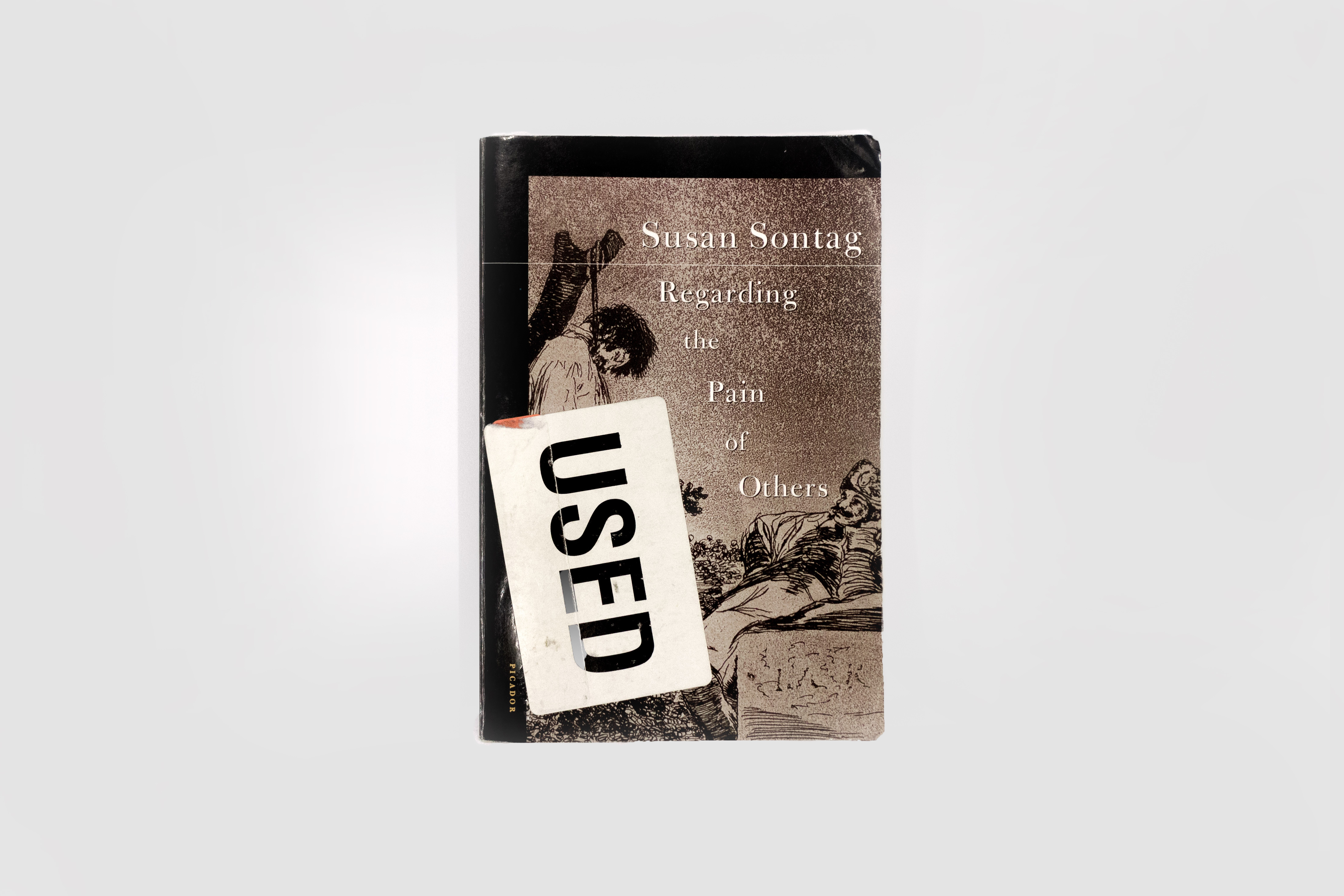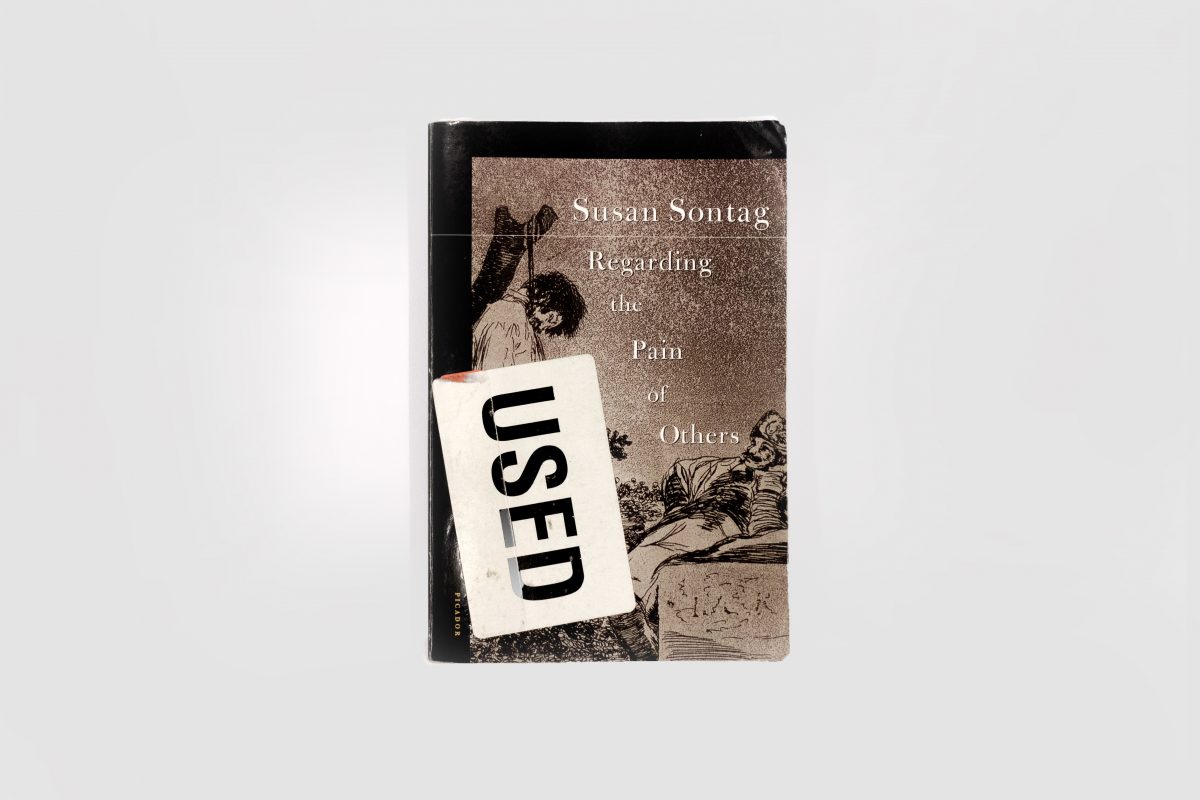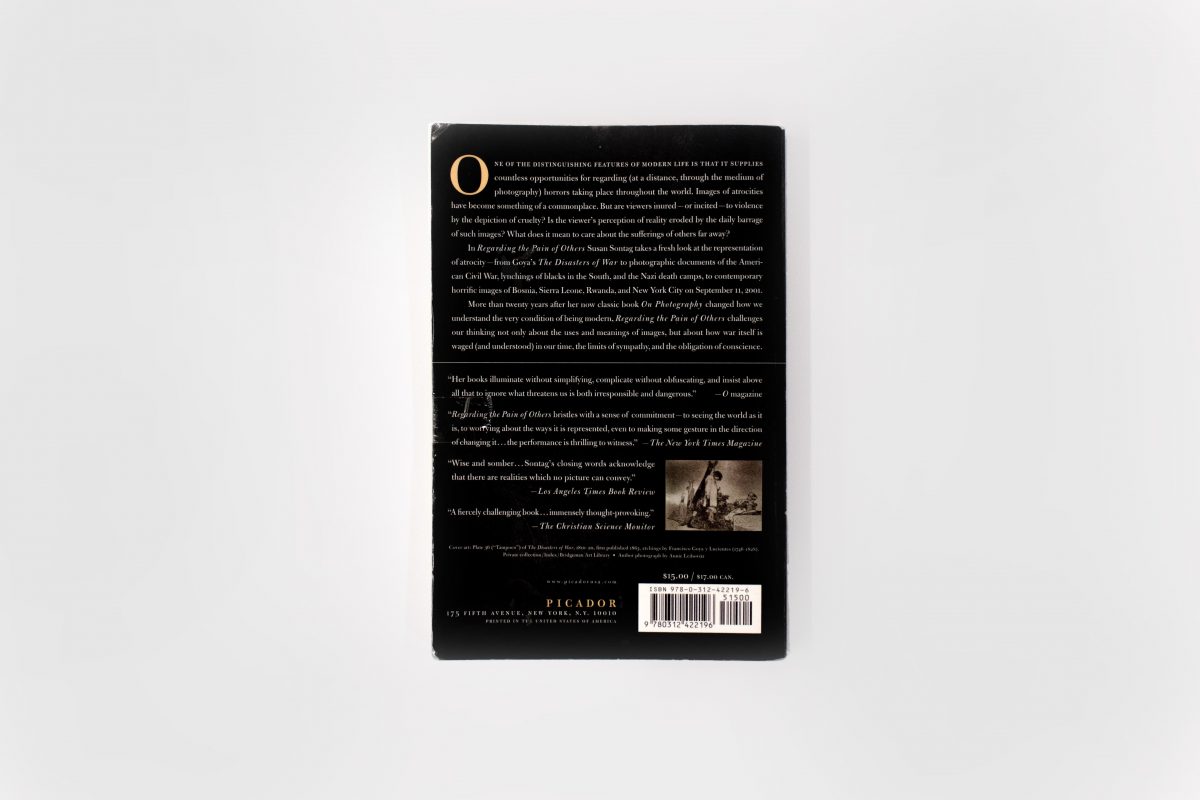IN HER BOOK, SUSAN SONTAG RAISES INTRIGUING ISSUES ABOUT THE DEPICTION OF VIOLENCE IN THE NEWS. A POINT THAT SEEMS ESPECIALLY RELEVANT IS SONTAG’S ADVICE FOR WHEN WE CONFRONT IMAGES OF VIOLENCE, THAT IS, TO THINK AND REFLECT RATHER THAN SIMPLY TO FEEL AND DO NOTHING
TEXT: PIM-ORN SUPAVARASUWAT
PHOTO: NAPAT CHARITBUTRA
(For English, please scroll down)
ในหนังสือ Regarding the Pain of the Others (2003) โดย Susan Sontag กล่าวถึง ความรุนแรงในภาพข่าวได้อย่างน่าสนใจ โดยเฉพาะข้อเสนอแนะที่ Sontag ชี้ชวนให้เราทำเมื่อพบเจอกับเนื้อหาที่เกี่ยวกับความรุนแรงก็คือ การ “คิด” ถึงมันอย่างจริงจัง มากกว่าแค่ “รู้สึก” (ไปวันๆ)
Regarding the Pain of Others
Susan Sontag
Picador, 2003
Paperback
ISBN 0-312-42219-9
เราควรจะรู้สึกอย่างไรกับข่าวความรุนแรง?
ใน Regarding the Pain of Others (2003) Susan Sontag ตั้งคำถามกับสิ่งที่เธอเรียกว่า “สารัตถะของประสบการณ์สมัยใหม่” นั่นคือ ประสบการณ์และความรู้สึกที่เกิดขึ้นเมื่อเราได้เห็นภาพความรุนแรงที่เกิดขึ้นทั้งใกล้ หรือไกลตัว ที่ถูกส่งตรงจากจุดเกิดเหตุถึงเราในเวลาไล่เลี่ยกับเหตุการณ์จริงอย่างหลีกเลี่ยงไม่ได้
“คำถามก็คือ เราจะจัดการกับความรู้สึกที่เกิดขึ้นอย่างไร? เมื่อข้อมูลเหล่านั้นถูกถ่ายทอดมายังเรา” Sontag ตั้งคำถามถึงความรู้สึกที่เกิดขึ้นจากภาพความรุนแรงว่า “ถ้าเกิดว่ามีใครสักคนรู้สึกว่าไม่มีอะไรที่พวกเราและพวกเขาทำได้ คำถามคือ ใครคือ ‘พวกเรา’ และ ‘พวกเขา’ กันล่ะ? ต่อจากนั้นเขาก็จะรู้สึกเบื่อ รังเกียจ กระทั่งไม่แยแสต่อเหตุการณ์” คำถามที่ไร้คำตอบข้อนี้ นำไปสู่สภาวะสุ่มเสี่ยงที่นำไปสู่ความเฉยชา ไร้ทางเลือกและหนทางที่จะนำไปสู่การแก้ไขปัญหา ผู้เขียนเสนอว่าการนิ่งเฉย เป็นปฏิกิริยาต่อภาพความรุนแรงที่ไม่ถูกต้องนัก เช่นเดียวกันกับการแสดง “ความเห็นอกเห็นใจ” น่าแปลกใจใช่ไหมละ?
ในตอนท้ายของหนังสือ Sontag ได้จุดประเด็นที่น่าสนใจเกี่ยวกับความเห็นอกเห็นใจ ความรู้สึกที่ย้ำเตือนถึงความเป็นมนุษย์ และสิ่งที่ทำเน้นย้ำความเป็นผู้บริสุทธิ์ของตัวเราอยู่ ว่าไม่ใช่สิ่งที่เราควรจะรู้สึกต่อภาพเหตุการณ์ความรุนแรง กลับกัน เธอเสนอว่าสิ่งที่เราควรจะทำคือ “เก็บความรู้สึกสงสารต่อเหยื่อสงครามและการคุกคามจากประเด็นทางการเมืองไว้เถอะ แต่ควรตระหนักว่าเราขณะนี้ที่อยู่สุขสบาย นั้นก็ดำรงอยู่บนผืนแผ่นเดียวกันกับเหยื่อความรุนแรงเหล่านั้นเหมือนกัน และไม่แน่ว่า สิ่งนั้นมันอาจจะเกิดขึ้นจากผลของการกระทำของเราก็เป็นได้” ตัวอย่างที่ชัดเจนคงจะเป็นกรณีการกราดยิงในโรงเรียนในอเมริกา ประชาชนผู้สนับสนุนสิทธิในการครอบครองปืนอย่างอิสระควรจะนึกย้อนได้ว่า พวกเขาเองก็มีส่วนทำให้เกิดปัญหานี้ จากการสนับสนุนรัฐบาลที่ไม่เข้มงวดนักกับการควบคุมอาวุธปืนและความปลอดภัยของประชาชนในประเทศ อย่างหนึ่งที่ทำได้ คือการเห็นและให้ความสนใจแก่กลุ่มนักเรียนไฮสคูลที่ออกมาต่อต้านความรุนแรงจากการอนุญาตให้พกอาวุธปืน ในฐานะที่พวกเขาเป็นเหยื่อของการตัดสินใจของคนกลุ่มหนึ่งที่ไม่ใยดีใดๆ แม้แต่น้อยกับความเจ็บปวดของพวกเขา หรือคนอีกกลุ่มหนึ่งคือ พวกที่เอาหูไปนา เอาตาไปไร่ ท้ายที่สุด สิ่งที่ Sontag ชี้ชวนให้เราทำเมื่อพบเจอกับเนื้อหาที่เกี่ยวกับความรุนแรงก็คือ การ “คิด” ถึงมันอย่างจริงจัง มากกว่าแค่ “รู้สึก” (ไปวันๆ)

In Regarding the Pain of Others (2003), Susan Sontag interrogates what she calls “a quintessential modern experience,” that is, the experience of bearing witness to images of violence happening nearby and elsewhere, an experience that is made possible and perpetuated by photography and journalism.
“The question is what to do with the feelings that have been aroused, the knowledge that has been communicated,” Sontag writes of the emotions stirred in us by violent images. “If one feels that there is nothing ‘we’ can do—but who is that ‘we’?—and nothing ‘they’ can do either—and who are ‘they’?—then one starts to get bored, cynical, apathetic.” These unanswered questions regarding who exactly is responsible are positively dangerous if it leaves one in this state of numb stasis, ill-equipped with the tools needed to effect any real change. As Sontag implies, passivity and inaction are inadequate responses to witnessing violence in the media, and, surprisingly, so is sympathy.
Towards the end of the book, Sontag makes a provocative point that sympathy, the kind that assures us that we are still human, the kind that “proclaims our innocence,” is not the most appropriate response to images of violence. Instead, she suggests that what we should do is to “set aside the sympathy we extend to others beset by war and murderous politics for a reflection on how our privileges are located on the same map as their suffering, and may—in ways we might prefer not to imagine—be linked to their suffering.” For instance, a gun rights advocate who is upset by reports of school shootings should reflect on his or her contribution to electing the kind of government that does not think stricter gun control and protection for its citizens are priorities. One only have to look to the masses of American high-school students protesting against gun violence as an example of sufferers speaking out about decisions made on their behalf by a group of people who are seemingly unaware of their sufferings or have simply chosen to turn a blind eye and refuses responsibility. What Sontag urges us to do, then, when we are confronted by images of violence, rather than to feel, is really to think.



